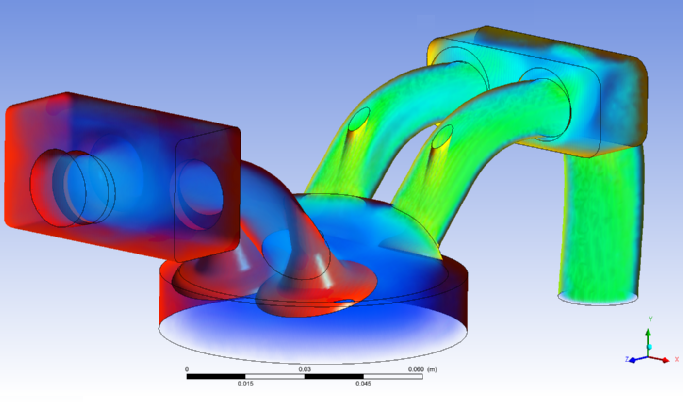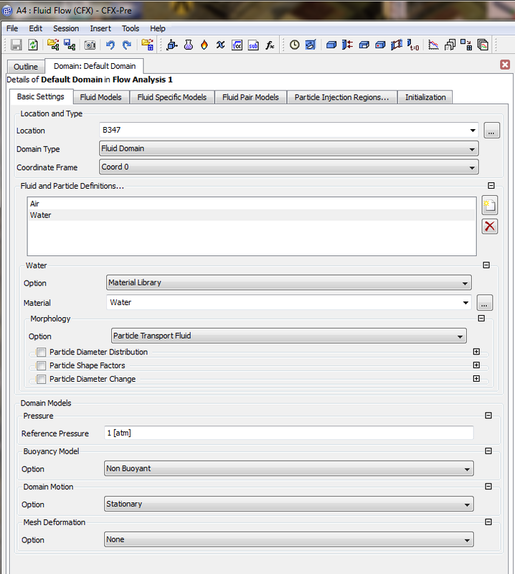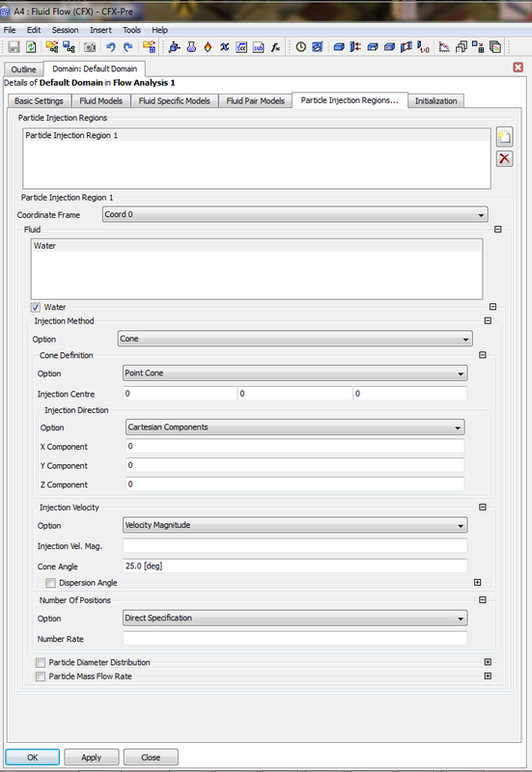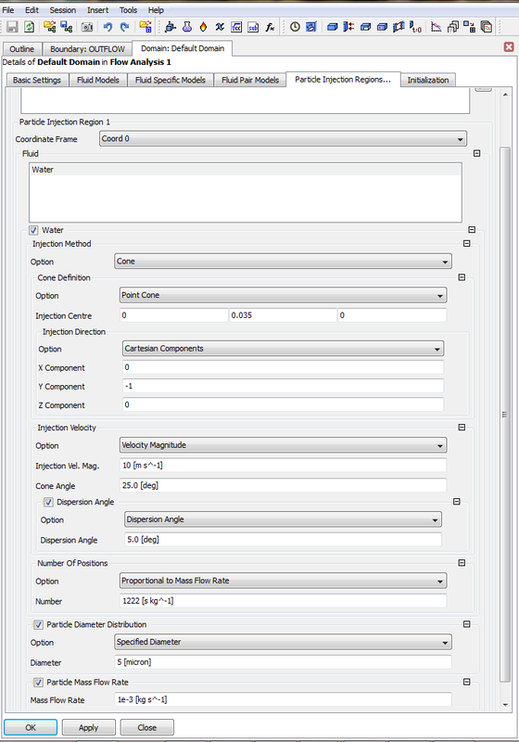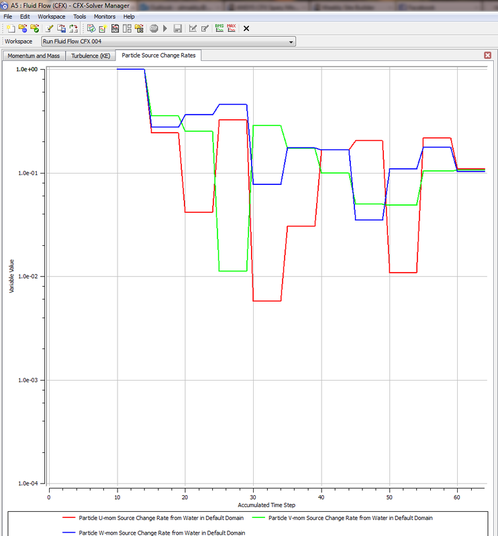Fuel Spray Modelling
Important notes
1- Please don’t send me an email asking me to send you tutorials, what is available has been uploaded on the website.
2- I would very much appreciate any feedback about the tutorials, and your contribution will be stated in the tutorial, I plan to update the tutorials.
1- Please don’t send me an email asking me to send you tutorials, what is available has been uploaded on the website.
2- I would very much appreciate any feedback about the tutorials, and your contribution will be stated in the tutorial, I plan to update the tutorials.
By clicking on the image below you can download the required geometry for the tutorial:
Different sprays produce different sizes of water droplets. ANSYS solves the momentum equations hence it models the momentum transport within a calculation domain. Droplet size characterization is usually is done through experiments. The easiest method is to take snapshots of the water droplets and estimate their size for a specified area of space. Then you can say by looking at the image that 5 % of the droplets are 5 cm in size 25% 1 cm, 40% 0.05 cm,etc. This will result in a particle distribution histogram. Consequently the more necessary parameters you consider for the simulation the more chance you have better results.
Spray characteristics that need to be recognized:
1- Different sprays have different break up distance this is the distance whereby the water jet starts breaking up into finer particles.
2- Another parameter is penetration distance which is the furthest distance to which water droplets reach to from where they are sprayed.
3- Water surface tension contributes to the break up, meaning that water that has more minerals would break up at further distance than pure water, hence minerals play part in making the droplet intact when projected to external force.
4- Injection speed affects particle break up distance.
5- The nozzle tip length also plays part in particle breakup.
6- The further the distance from the ground the spray the more chance there is for the particles to break up.
Regarding the boundary condition volume fraction boundary condition. For gases it is taken in ppm which means [micromole/mole] hence for oxygen if we want to find its concentration in air its 209460 [ppm] which is 0.21 as a volume fraction consequently if you want to apply it to the opening boundary condition it would be 0.21 Oxygen and 0.79 rest of Air. Both should sum up to 1. The same applies if your using a gas liquid mixture 0.2 water and 0.8 air. Both would sum up to 1.
Spray characteristics that need to be recognized:
1- Different sprays have different break up distance this is the distance whereby the water jet starts breaking up into finer particles.
2- Another parameter is penetration distance which is the furthest distance to which water droplets reach to from where they are sprayed.
3- Water surface tension contributes to the break up, meaning that water that has more minerals would break up at further distance than pure water, hence minerals play part in making the droplet intact when projected to external force.
4- Injection speed affects particle break up distance.
5- The nozzle tip length also plays part in particle breakup.
6- The further the distance from the ground the spray the more chance there is for the particles to break up.
Regarding the boundary condition volume fraction boundary condition. For gases it is taken in ppm which means [micromole/mole] hence for oxygen if we want to find its concentration in air its 209460 [ppm] which is 0.21 as a volume fraction consequently if you want to apply it to the opening boundary condition it would be 0.21 Oxygen and 0.79 rest of Air. Both should sum up to 1. The same applies if your using a gas liquid mixture 0.2 water and 0.8 air. Both would sum up to 1.
The most important parameter is the surface tension then comes the drag coefficients of the droplets depending on their shape factors. Shape factors depend on the speed of spray. Remember that surface tension is related to temperature when studying combustion. This would introduces to the study a dimensionless parameter called the Weber Number. Some studies also take into consideration the Osborn dimensionless number which is the inverse of the Reynolds number .
In order to apply the spray cone to your study you have to use the Particale Transport Fluid
You need to insert the Injection Centre coordinates
Once you apply it you can see the vector representation of the spray, also you can see it represented as an Icon on the left-hand side.
The user can use the following input parameters for the simulation
Once the simulation is run you will see the following:
Spray Multiphase Modelling
You will be required to take temperature in consideration. This will cause phase change to occur during the process of spray.
In order to understand a numerical model you need to see the
used equations for it. The reason for that because you can get hints to what input
parameters are required for you to find. In addition for you to know where it
can be applied. Example for a water fountain or a water spray you won’t need to
take temperature into account. While for a car combustion engine it is required
for you to take temperature into account because it plays part in the
evaporation process of the droplets. It is highly recommend as an initial step for you to find the
models of interest in the CFX online documentation. Because you will need to
mention the used equations in your report or dissertation at later stages
of your project.
Unless otherwise noted, all content on this site is @Copyright by Ahmed Al Makky 2012-2018 - http://cfd2012.com
